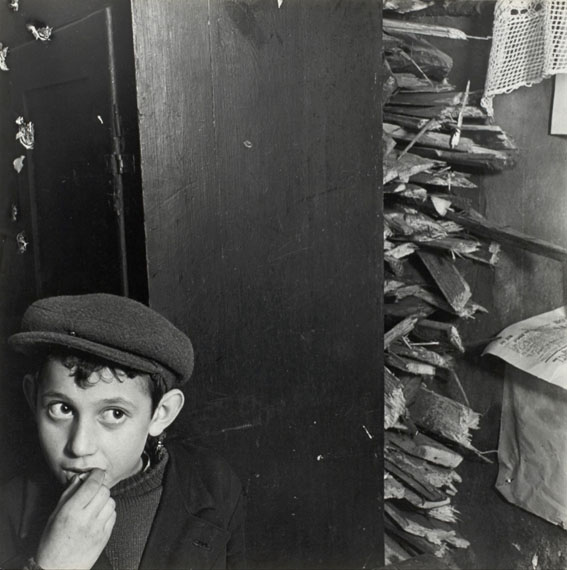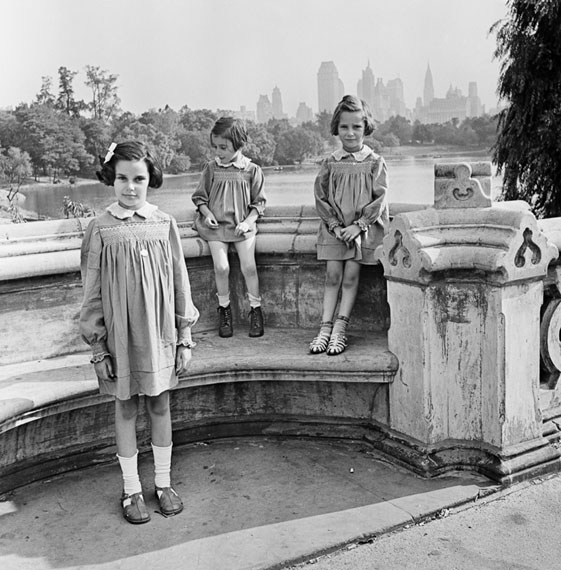
© Mara Vishniac Kohn, courtesy International Center of Photography
Roman Vishniac »
(re)discovered
Exhibition: 4 Apr – 24 Aug 2014
Jewish Historical Museum
Nieuwe Amstelstraat 1
1011 PL Amsterdam
Daily 11-17

Joods Cultureel Kwartier | Jewish Cultural Quarter
Nieuwe Amstelstraat 1
1011 PL Amsterdam
+31 (0)20-5310310
Daily 11-17

© Mara Vishniac Kohn, courtesy International Center of Photography
Roman Vishniac
(Re)discovered
Exhibition: 4 April to 24 August 2014
The extensive retrospective "Roman Vishniac (Re)discovered" introduces never before seen work of Russian-American photographer Roman Vishniac (1897-1990), who is primarily known for his pre-war photographs of Eastern European Jews. The exhibition, originally mounted by the International Center of Photography (ICP) in New York, includes recently discovered vintage prints, film footage, personal correspondence and prints made for the first time from a trove of more than 10.000 negatives.
Roman Vishniac's international reputation as a photographer is based primarily on his world-renowned work A Vanished World, published in 1983. The photographs in the book played a major role in establishing the modern-day romantic view of Jewish life in Eastern Europe before the Second World War. Vishniac's photographs documenting this world on the eve of its destruction were used by Steven Spielberg for his film Schindler's List.
Vishniac's oeuvre, though, is much broader. His body of work spans more than five decades and covers diverse subjects ranging from Berlin street life in the 1920s, the rise of the Nazis in the 1930s, Jewish refugees in Europe and the United States in the 1930s and 40s, to the ruins of Berlin in 1947. In the 1950s, Vishniac, an accomplished biologist, began building a reputation as a pioneer in colour photomicroscopy.
The true extent of Vishniac's versatility as a photographer became evident only after his daughter turned over his archives to ICP in 2007. Years of study of his work resulted in this exhibition, which reveals not only the incredible diversity of his subject matter, but also the influence of modernism on his photography. The exhibition demonstrates that Vishniac deserves to be counted among the greatest social documentary photographers of the twentieth century, and asserts his position as a modern master.

© Mara Vishniac Kohn, courtesy International Center of Photography
Born in Russia, Roman Vishniac emigrated to Berlin in 1920 where he became an avid amateur photographer. In 1935 the American Jewish Joint Distribution Committee, a Jewish aid organisation, commissioned him to photograph the destitute Jewish communities of Eastern Europe. The Committee used his photographs to raise funds. In early 1941 Vishniac emigrated to New York, where he opened a portrait studio and documented the lives of Jewish refugees in the United States. He returned to Europe in 1947 and photographed Jewish displaced persons camps and the ruins of Berlin. From the beginning of the 1950s until his death, Vishniac devoted himself completely to his great passion, color photomicroscopy.
Roman Vishniac (Re)discovered comprises over 200 vintage photographs and new prints, 150 documents and fragments of pre-war films shot by Vishniac. The JHM will be focusing special attention on his photographs from 1939 of the former Jewish agrarian training camp Nieuwesluis in Wieringermeer, the Netherlands. The exhibition concludes with a slide presentation showing 100 of Vishniac's scientific photomicrographs. The exhibition was mounted at ICP in New York in 2013 and curated by Maya Benton.
This exhibition is made possible with support from Mara Vishniac Kohn, whose generosity founded the Roman Vishniac Archive at ICP, and from the Andrew and Marina Lewin Family Foundation, Estanne and Martin Fawer, The David Berg Foundation, Righteous Persons Foundation, National Endowment for the Arts, Olitsky Family Foundation, the ICP Exhibitions Committee, James and Merryl Tisch, Koret Foundation, and additional anonymous donors.

and Hebrew Immigrant Aid Society (HIAS), shortly after their arrival in the United States, Central Park, New York, 1941
© Mara Vishniac Kohn, courtesy International Center of Photography